2-Aminopyridine
Synonym(s):o-Aminopyridine;2-Aminopyridine;2-AP;2-Pyridinamine;2-Pyridylamine
- CAS NO.:504-29-0
- Empirical Formula: C5H6N2
- Molecular Weight: 94.11
- MDL number: MFCD00006312
- EINECS: 207-988-4
- SAFETY DATA SHEET (SDS)
- Update Date: 2025-09-25 17:15:13

What is 2-Aminopyridine?
Chemical properties
2-Aminopyridine is a yellow or white crystalline (sand-like) solid with a characteristic odor. It is soluble in water, alcohol, benzene, ether and hot petroleum ether. It tastes bitter and has anesthetic effect. It is a significant synthetic synthon, with unique dual nucleophilic structure. It can react with ketones, aldehydes, acids, multifunctional esters, halogenated aromatics and other compounds to synthesize five- and six-member azaheterocycles. after prolonged storage, may darken in color.
The Uses of 2-Aminopyridine
2-Aminopyridine is used primarily in the pharmaceutical industry as an intermediate in chemical synthesis. It is used to manufacturing analgesic and anti-inflammatory drugs piroxicam and lornoxicam. 2-Aminopyridine is a basic building block of several heterocyclic compounds and Schiff bases. It has been shown to reversibly block voltage-dependent potassium channels, and is also a common impurity from the synthesis of compounds found in hair dyes. It is a derivatizing agent which can be used as a fluorescent label for oligosaccharide detection, chromatographic separation, fluorometric or mass spectrometric analysis. 2AP and its derivatives are good candidates for antimicrobial, anticorrosion and molecular sensing applications.
What are the applications of Application
2-Aminopyridine is a compound has been shown to reversibly block voltage-dependent potassium channels
Preparation
2-Aminopyridine is manufactured using the reaction of pyridine with sodium amide (Chichibabin amination). It is obtained in high yield after the hydrolysis of the intermediate salt (Merck, 2001; Shimizu et al., 1993).
What are the applications of Application
2-Aminopyridine has also been used to derivatize sialyloligosaccharides for detection in FAB-MS. It can also be used:
As a reactant in the synthesis of 3-aroylimidazopyridines from chalcones by aerobic oxidative amidation using copper acetate catalyst.
In the synthesis of crystalline Cu(II) complex, di-μ-(2-aminopyridine(N,N′))-bis[(2,6 pyridinedicarboxylate)aquacopper(II)] tetrahydrate using 2,6-pyridinedicarboxylic acid and Cu(CH3COO)2.H2O.
As an imprinting molecule for the preparation of poly(methacrylic acid–ethylene glycol dimethacrylate) polymer. It is packed in micro-column for selective solid phase extraction of 2-aminopyridine.
As a reactant in the synthesis of 2-aryl-3-(pyridin-2-yl)-1,3-thiazolidin-4-ones in the presence of Lewis acid catalysts.
As a reactant in the synthesis of 2-(2-aminopyridinium)acetyl starch with antioxidant property.
Synthesis Reference(s)
The Journal of Organic Chemistry, 72, p. 4554, 2007 DOI: 10.1021/jo070189y
Tetrahedron Letters, 11, p. 3901, 1970
General Description
2-aminopyridine appears as white powder or crystals or light brown solid. It is soluble in water and alcohol. It is toxic by ingestion and by inhalation of the dust. It is used to make pharmaceuticals and dyes. (NTP, 1992)
Air & Water Reactions
Decomposes in air. Soluble in water.
Reactivity Profile
2-Aminopyridine neutralizes acids in exothermic reactions to form salts plus water. May be incompatible with isocyanates, halogenated organics, peroxides, phenols (acidic), epoxides, anhydrides, and acid halides. May generate hydrogen, a flammable gas, in combination with strong reducing agents such as hydrides. Reacts with oxidizing agents .
Hazard
Toxic.
Health Hazard
2-Aminopyridine causes central nervous system effects.
Fire Hazard
2-Aminopyridine is combustible.
Safety Profile
Poison by ingestion, inhalation, subcutaneous, intravenous, and intraperitoneal routes. Toxic effects resemble strychnine poisoning. Human systemic effects by inhalation: somnolence, convulsions, and antipsychotic effects. Human central nervous system effects by inhalation. When heated to decomposition it emits highly toxic fumes of NOx,.
Potential Exposure
2-Aminopyridine is used in the manufacture of pharmaceuticals; especially antihistamines.
Carcinogenicity
The LD50 in mice by intraperitoneal injection
was 35 mg/kg; lethal doses in animals also
produced excitement, tremors, convulsions
and tetany.1 Fatal doses were readily absorbed
through the skin. A 0.2 M aqueous solution
dropped in a rabbit’s eye was only mildly
irritating.
2-Aminopyridine was not mutagenic in
a variety of Salmonella tester strains with or
without metabolic activation.
Environmental Fate
Soil. When radio-labeled 4-aminopyridine was incubated in moist soils (50%) under aerobic
conditions at 30 °C, the amount of 14CO2 released from an acidic loam (pH 4.1) and an alkaline,
loamy sand (pH 7.8) was 0.4 and 50%, respectively (Starr and Cunningham, 1975).
Chemical/Physical. Releases toxic nitrogen oxides when heated to decomposition (Sax and
Lewis, 1987).
Shipping
UN2671 Aminopyridines, Hazard Class: 6.1; Labels: 6.1-Poisonous materials.
Purification Methods
It crystallises from *benzene/pet ether (b 40-60o) or CHCl3 /pet ether. [Beilstein 22/8 V 280.]
Incompatibilities
Incompatible with oxidizers (chlorates, nitrates, peroxides, permanganates, perchlorates, chlorine, bromine, fluorine, etc.); contact may cause fires or explosions. Keep away from alkaline materials, strong bases, strong acids, oxoacids, epoxides
Waste Disposal
Incineration with nitrogen oxides removal from effluent gas.
Properties of 2-Aminopyridine
| Melting point: | 59 °C |
| Boiling point: | 204-210 °C(lit.) |
| Density | 1.0308 (estimate) |
| vapor pressure | 5 hPa (125 °C) |
| refractive index | 1.5560 (estimate) |
| Flash point: | 198 °F |
| storage temp. | Store below +30°C. |
| solubility | 890g/l |
| form | Crystalline Powder, Crystals or Flakes |
| pka | 6.82(at 20℃) |
| color | Cream to light yellow-beige |
| Odor | Characteristic odour |
| Water Solubility | Slightly soluble. 1-5 g/100 mL at 19 ºC |
| Sensitive | Hygroscopic |
| Merck | 14,473 |
| BRN | 105785 |
| Exposure limits | NIOSH REL: TWA 0.5 ppm (2 mg/m3), IDLH 5 ppm; OSHA PEL: 0.5 ppm;
ACGIH TLV: TWA 0.5 ppm. |
| CAS DataBase Reference | 504-29-0(CAS DataBase Reference) |
| NIST Chemistry Reference | 2-Pyridinamine(504-29-0) |
| EPA Substance Registry System | 2-Aminopyridine (504-29-0) |
Safety information for 2-Aminopyridine
| Signal word | Danger |
| Pictogram(s) |
 Corrosion Corrosives GHS05  Skull and Crossbones Acute Toxicity GHS06 |
| GHS Hazard Statements |
H314:Skin corrosion/irritation H412:Hazardous to the aquatic environment, long-term hazard |
| Precautionary Statement Codes |
P260:Do not breathe dust/fume/gas/mist/vapours/spray. P273:Avoid release to the environment. P280:Wear protective gloves/protective clothing/eye protection/face protection. P303+P361+P353:IF ON SKIN (or hair): Remove/Take off Immediately all contaminated clothing. Rinse SKIN with water/shower. P305+P351+P338:IF IN EYES: Rinse cautiously with water for several minutes. Remove contact lenses, if present and easy to do. Continuerinsing. |
Computed Descriptors for 2-Aminopyridine
2-Aminopyridine manufacturer
JSK Chemicals
Clickchem Research LLP
Lorven Biologics Pvt Ltd
Sri Haimavathi Organics
New Products
4,4-Difluoropiperidine hydrochloride tert-butyl 9-methoxy-3-azaspiro[5.5]undecane-3-carboxylate Indole Methyl Resin N-Isopropylurea N,N-Dicyclohexylcarbodiimide(DCC) MELDRUMS ACID 5-METHYLISOXAZOLE-4-CARBOXYLIC ACID Magnessium Bis glycinate Zinc ascorbate 1-bromo-2-butyne 2-acetamidophenol 9(10H)-anthracenone Erythrosin B, 4-Piperidinopiperidine 2-((4-morpholinophenylamino) (methylthio) methylene) malononitrile 2,4-dihydroxybenzaldehyde 3-(4-morpholinophenylamino)-5-amino-1H-pyrazole-4-carbonitrile Methyl 2-methylquinoline-6-carboxylate 2,6-dichloro-4-nitropyridine 4-Bromo-2-chlorobenzonitrile 2-(benzylamino)acetic acid hydrochloride 4-(tert-Butoxycarbonylamino)but- 2-ynoic acid 3,4-dihydro-2H-benzo[b][1,4]dioxepine 1-Phenyl-1-cycloprppanecarboxylicacidRelated products of tetrahydrofuran
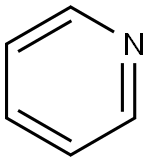
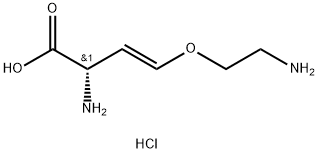
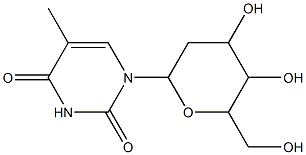
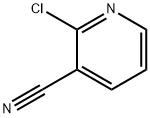




You may like
-
 2-Aminopyridine, p.a. CAS 504-29-0View Details
2-Aminopyridine, p.a. CAS 504-29-0View Details
504-29-0 -
 2-Aminopyridine pure CAS 504-29-0View Details
2-Aminopyridine pure CAS 504-29-0View Details
504-29-0 -
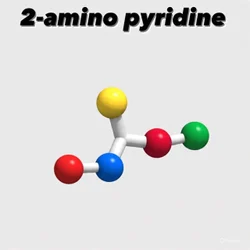 2 Aminopyridine Cas 504 29 0, Grade Standard: IPView Details
2 Aminopyridine Cas 504 29 0, Grade Standard: IPView Details
504-29-0 -
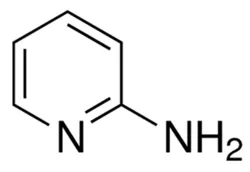 2-Amino Pyridine, For Api Intermediate, Grade: CommercialView Details
2-Amino Pyridine, For Api Intermediate, Grade: CommercialView Details
504-29-0 -
 White Crystal solid 2 Aminopyridine CAS Number: 504-29-0View Details
White Crystal solid 2 Aminopyridine CAS Number: 504-29-0View Details
504-29-0 -
 2 Aminopyridine CAS No: 504-29-0View Details
2 Aminopyridine CAS No: 504-29-0View Details
504-29-0 -
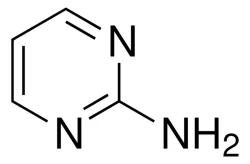 2 Aminopyridine PowderView Details
2 Aminopyridine PowderView Details
504-29-0 -
 2-AminopyridineView Details
2-AminopyridineView Details
504-29-0
